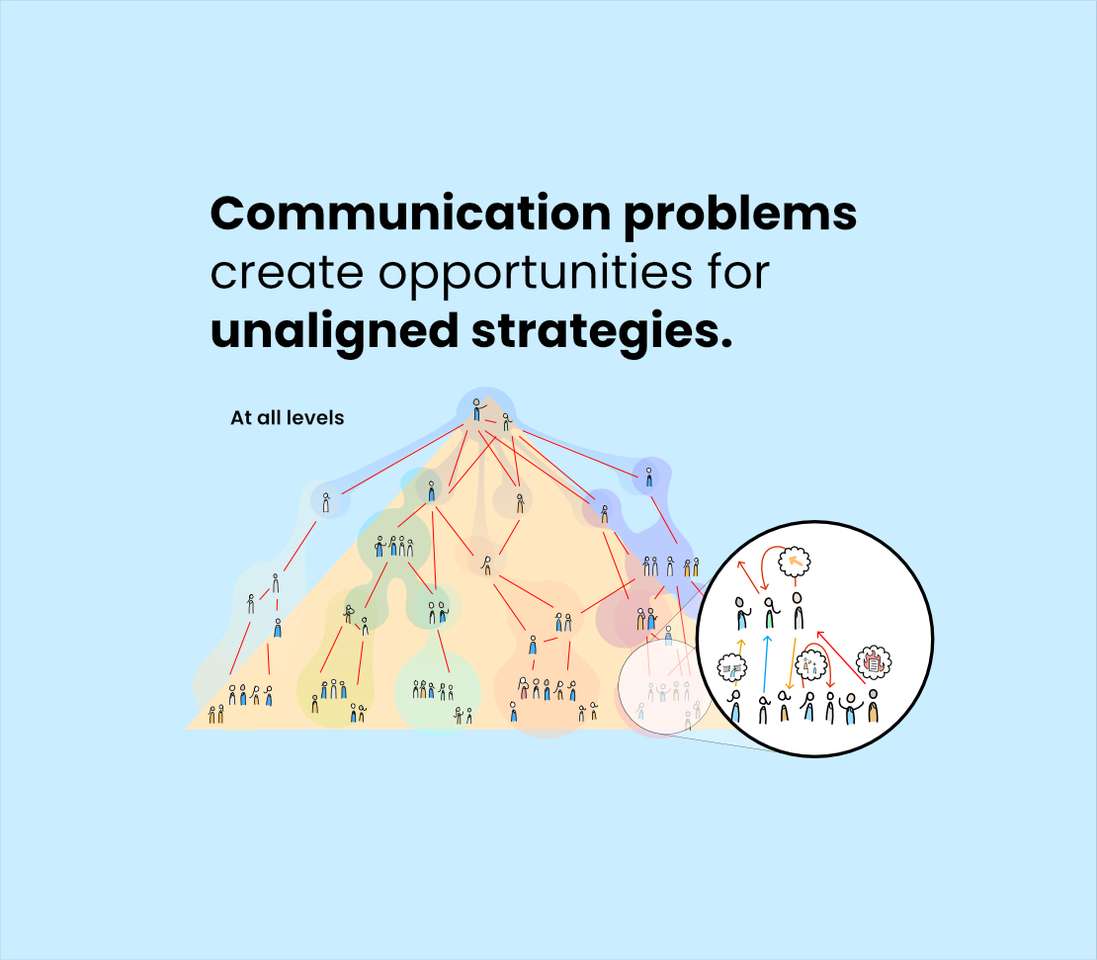
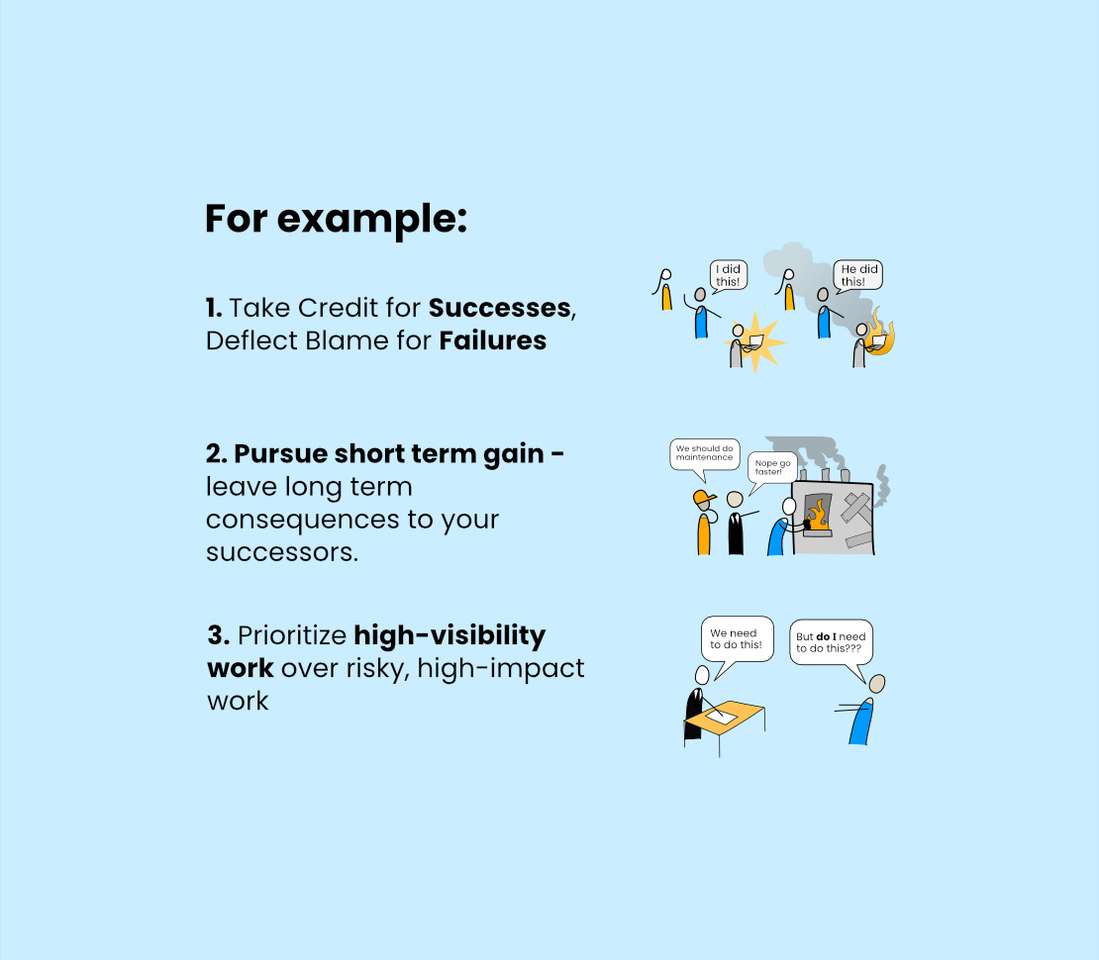
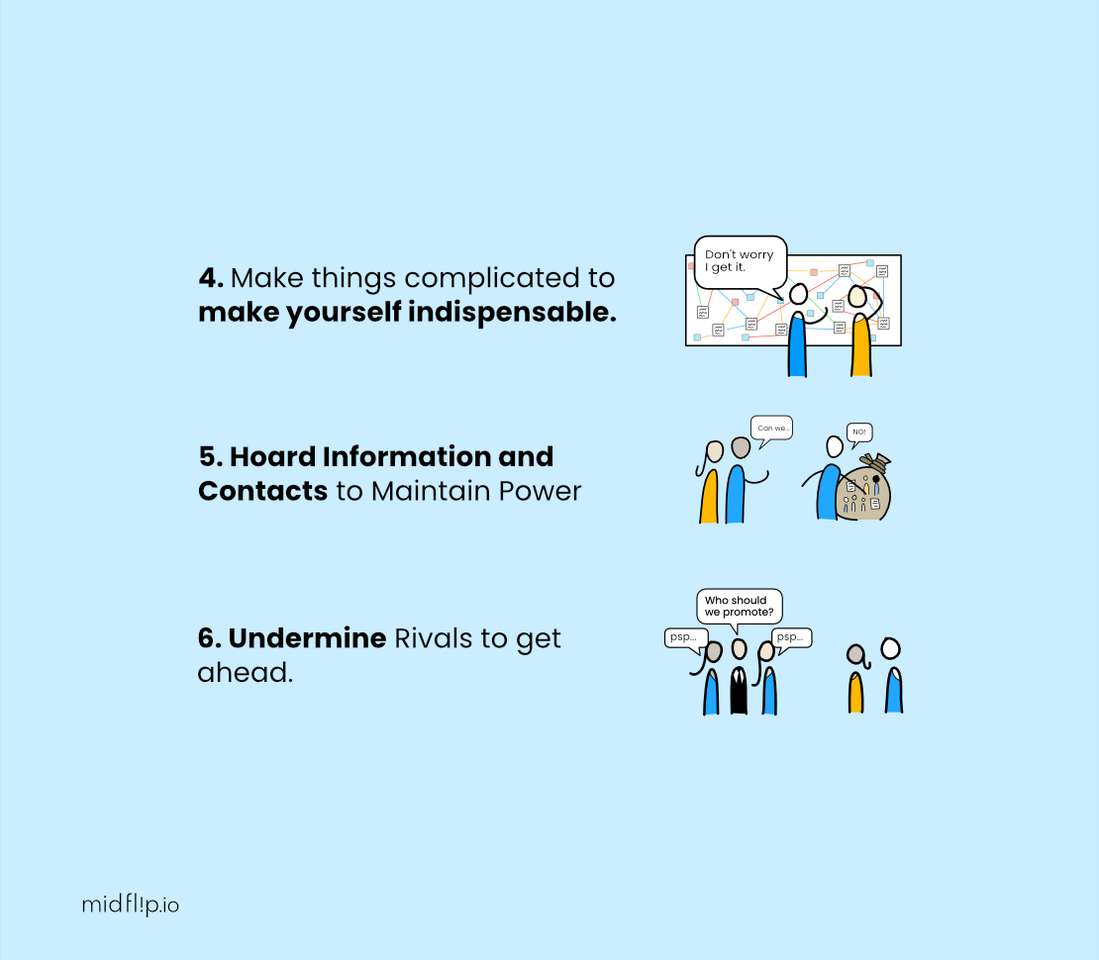

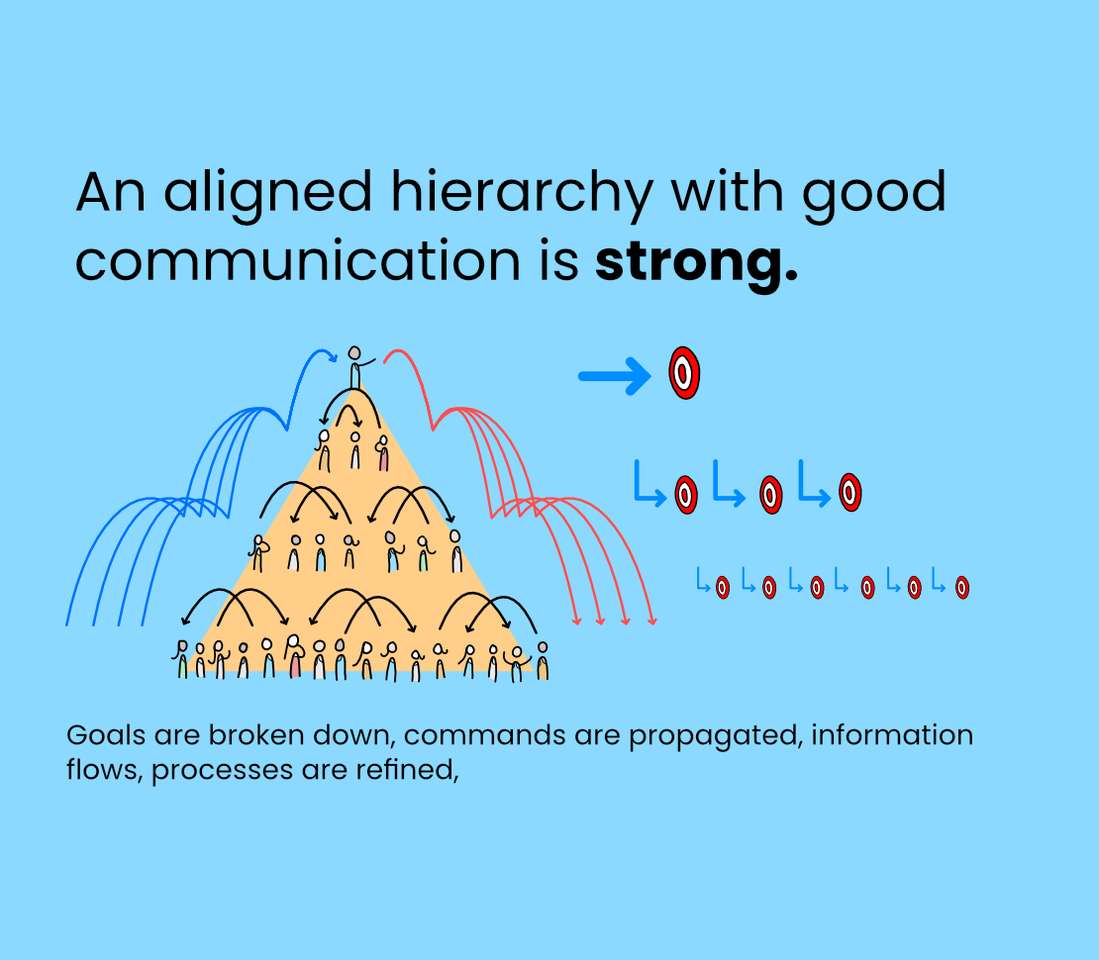

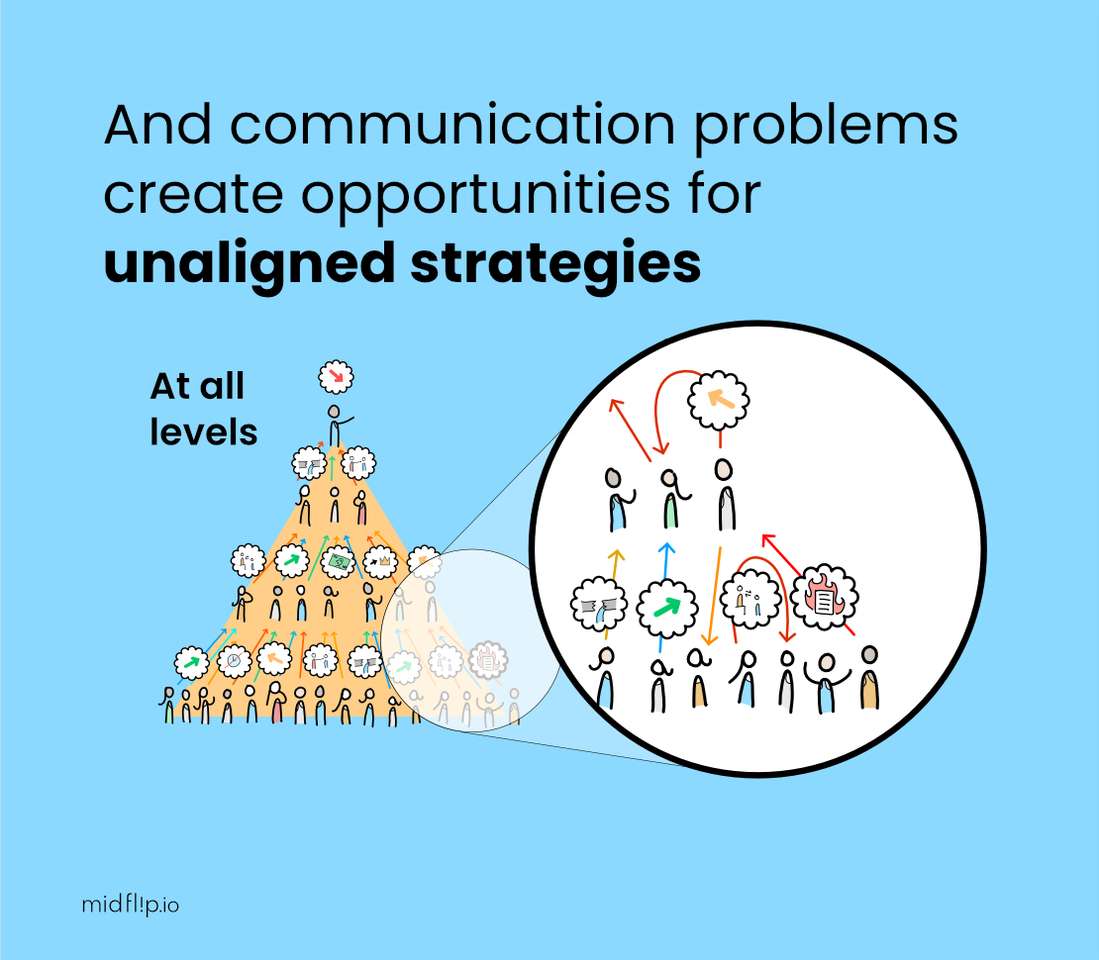


More Unaligned strategies and details
#1: Make things complicated to make yourself indispensable.
Those employing this strategy intentionally make systems, processes, or code overly complicated and opaque. This ensures that they become the go-to person, even if it harms efficiency and frustrates colleagues.
#2: Hoard Information and Contacts to Maintain Your Power
Individuals adopting this approach guard knowledge, access, and relationships jealously to maintain their own power and influence. They avoid documenting or sharing information that could help their team operate independently of them.
#3: Pursue short term Gain give Long term consequences to Your Successors
Those pursuing this tactic neglect underlying issues, defer necessary maintenance, or allow technical debt to pile up in order to meet short-term objectives. They leave the consequences and hard work of fixing it to those who come after them.
#4: Take Credit for Successes, Deflect Blame for Failures
Practitioners of this method ensure their contributions are highly visible to leadership. When things go wrong, they exploit ambiguity to avoid taking responsibility.
#5: Advocate for Reorgs to Secure Promotions and Power
Proponents of this strategy push for team restructuring, title changes, or strategic pivots to secure a promotion or consolidate authority. They move on to their next role before the negative impacts of the disruption become apparent.
#6: Play Politics and Undermine Rivals to Get Ahead
Those leveraging this technique engage in office politics, gossip, and backroom dealings to gain an edge over their perceived rivals. They subtly undermine their reputation and projects to make themselves look better by comparison.
#7: Become the filter through which all information flows
Adherents of this strategy position themselves as the gatekeeper for critical information within their team or organization. They control the flow of information to maintain their influence and make themselves indispensable.
#8: Use position of power to stop discussions on controversial topics
Those utilizing this approach exploit their authority to shut down or limit discussions on sensitive or controversial issues that could threaten their position or agenda. They stifle dissent and maintain the status quo.
#9: Prioritize high-visibility work over high-impact work
Proponents of this strategy focus their efforts on tasks and projects that are highly visible to leadership, even if they have a lower overall impact. They neglect critical but less glamorous work that doesn't contribute to their personal brand.
#10: Weaponize compliance and bureaucracy
Those employing this strategy use their mastery of internal processes, compliance requirements, and bureaucratic red tape to block, delay, or sabotage work they do not like.
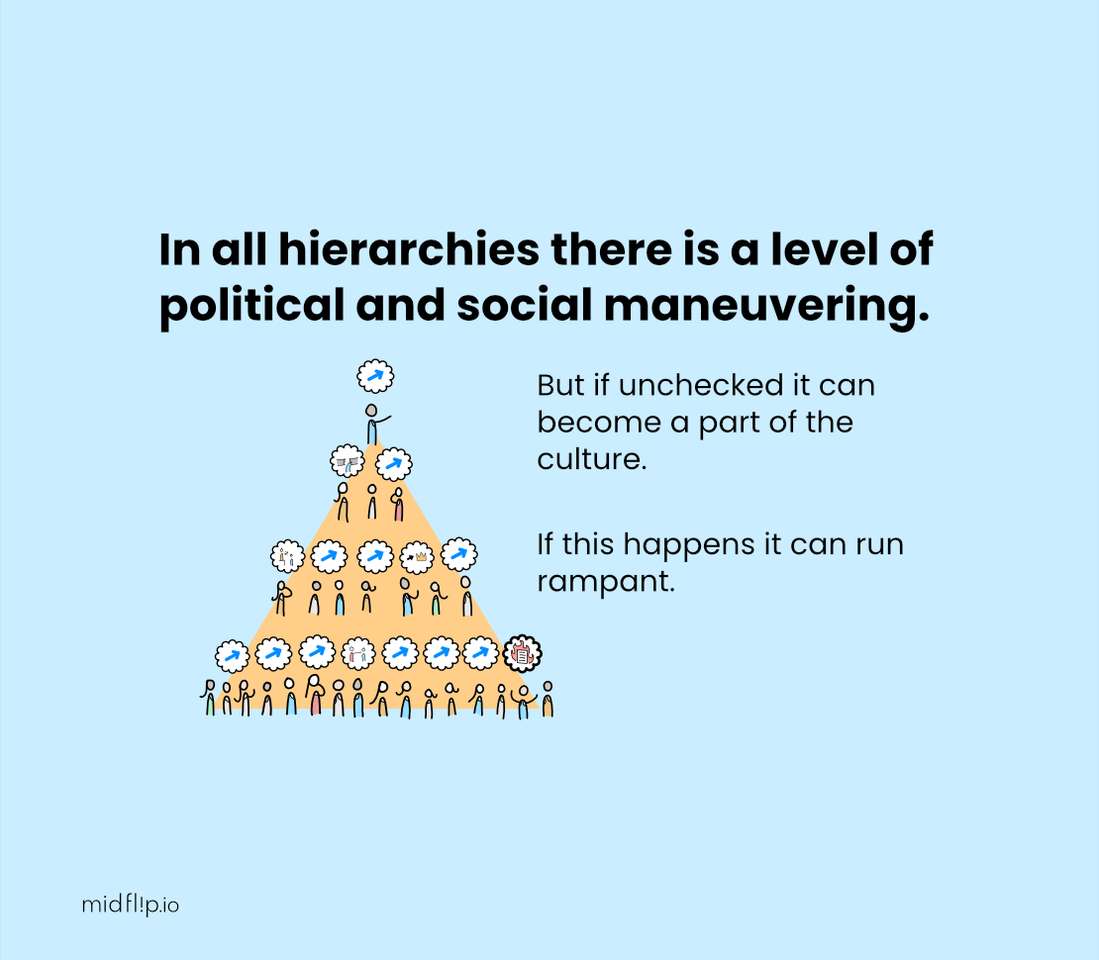



Problems with information flow and decision making
In a traditional hierarchy, decisions are made by the person or people at the top. This is an obvious failure point. Even if the hierarchy is strong and capable, if the top leader makes bad decisions, then the group will fail to achieve its goals.
Now then, we must focus our attention on this top leader and how they make their decisions. First, let us state the obvious, decisions are made based on information. In order to make good decisions, the leader needs good information about the group's situation, environment, opportunities, and problems. So how does the leader get this information???
Well, the immediate answer is from the hierarchy. Information about the group and its situation filters up from the bottom of the hierarchy towards the top. Where the people on the bottom have “on-the-ground” knowledge about their specialty and the situation. People in the middle then aggregate and filter that knowledge in order to present it to the leader. In the best-case situation, the people in the middle aggregate what is important for the leader to know and filter out meaningless noise.
Of course, you likely can already see the problem. The information moving up the hierarchy falls victim to the same issues we previously saw. Individuals in their attempts to move up the hierarchy utilize strategies which affect the information flow.
Imagine you are a worker in such a hierarchy. Affecting the information that moves to your supervisors and leaders is a particularly effective strategy.
You can avoid discussing long-term moves with upfront costs and thereby justify short-term moves.
You can avoid telling bad news, discussing new ideas or tackling large issues due to a risk averse strategy.
You can attempt to take credit or shift blame by twisting words to your supervisor.
You can hoard information so that others going for the same position have a disadvantage.
You can tell the leader and supervisors what they want to hear.
You can become friends with the leader/supervisors and speak poisoned words about competitors within the hierarchy.
These strategies and more plague the hierarchy's information ecosystem. Indeed, it is perhaps worse than you think, because as information flows upward each person adds the possibility of twisting the information for their own gain. It’s like a massive game of Chinese whispers where each individual is incentivized to change the message. And once again the closer you get to the top of the hierarchy, the more likely you find individuals who utilize these strategies because well… these strategies work.
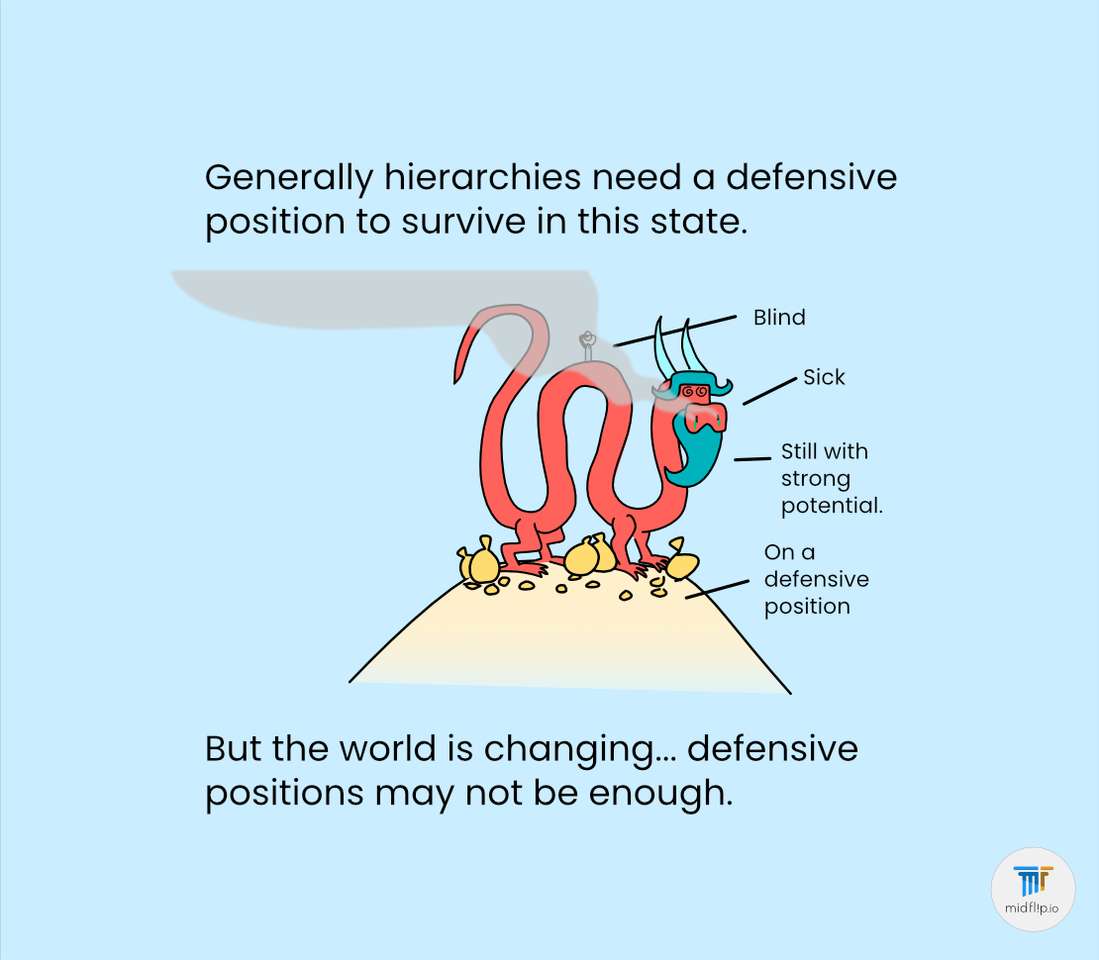


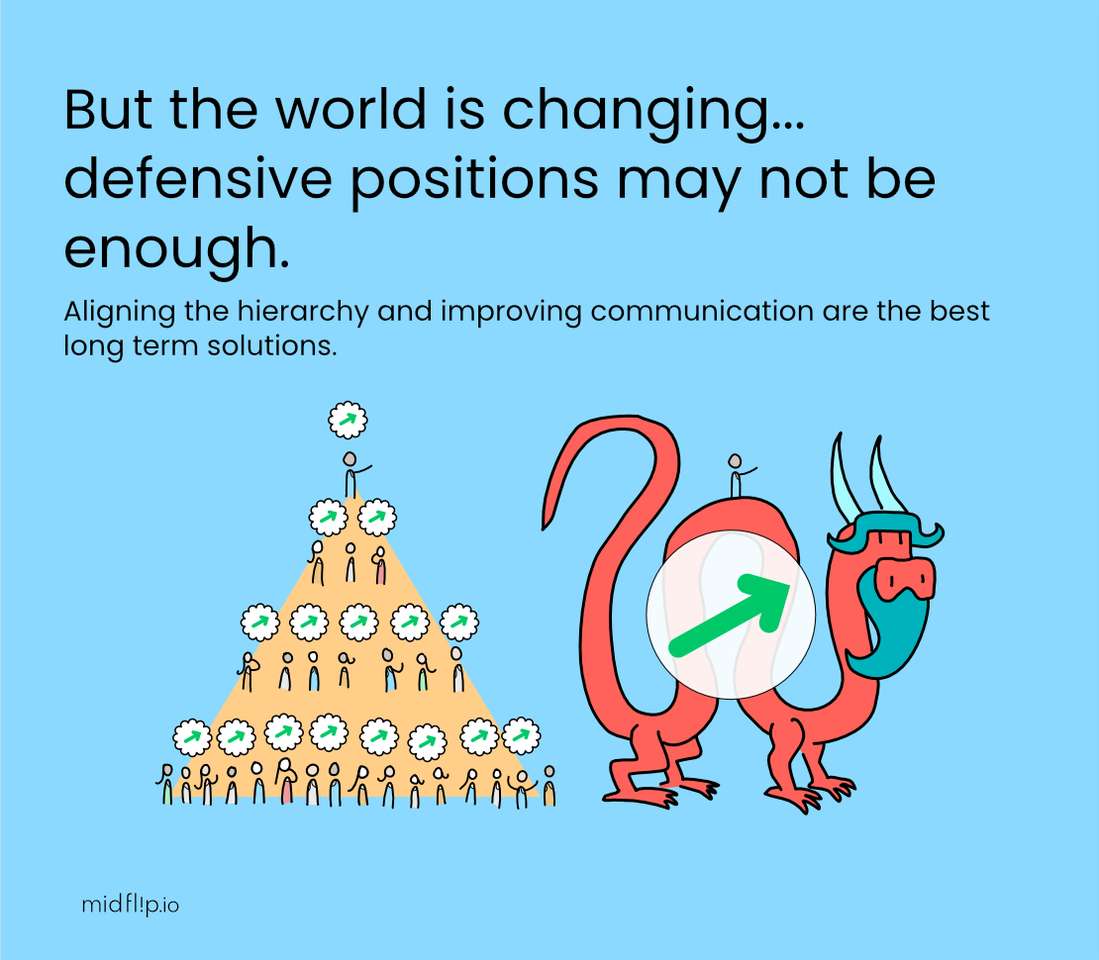
The Solution
The hierarchy structure is so useful that it can tug along even with these troubles. Especially if it has some defendable position. The world is full of such hierarchies. But let us say we want to improve. Let us say we want solutions. Well, there are multiple solutions.
The first can be implemented by a good leader. Such a leader can create an atmosphere which encourages general good will. They can make it so a culture emerges that disapproves of these political maneuverings. They can make it so risk-taking, long-term thinking, and speaking tough to power are appreciated and encouraged. This really does require a strong leader however, and this cannot be taken for granted.
The next solution is to move the group structure towards a multi-polar democratic hierarchy with a strong information eco-system. We will discuss that structure in the next article.
Finally, we have a new solution. A solution we at Midflip have been thinking about and designing for the past three years. Midflip offers a unique social knowledge library. A system designed to mimic the multi-polar democratic hierarchy system and foster a strong information eco-system. We aim to blow the smoke out of the leaders’ eyes and allow information to bubble up and effectively develop. You can learn more about this in the below link.



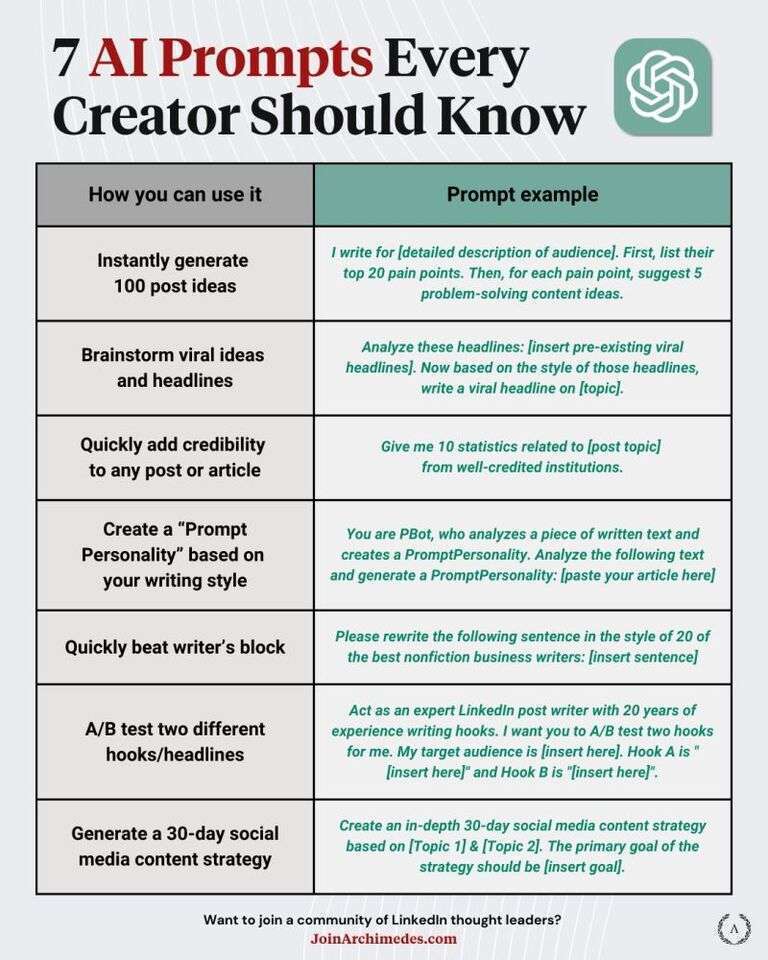
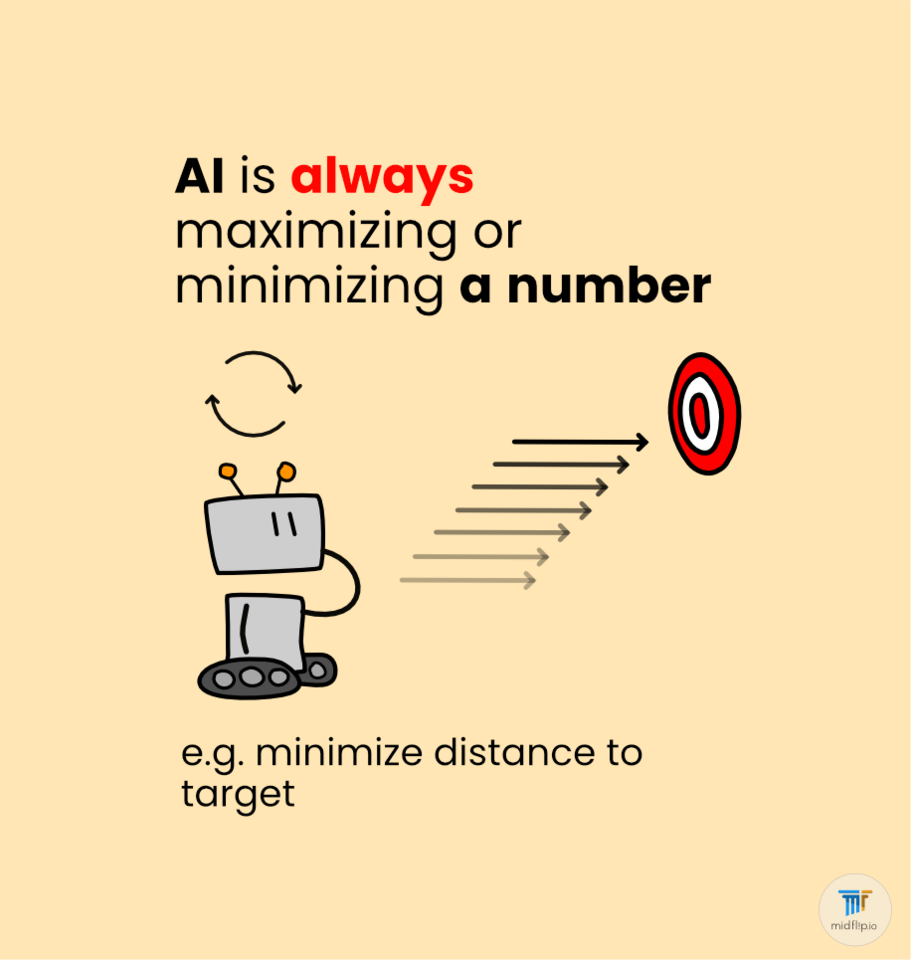
Hot comments
about anything